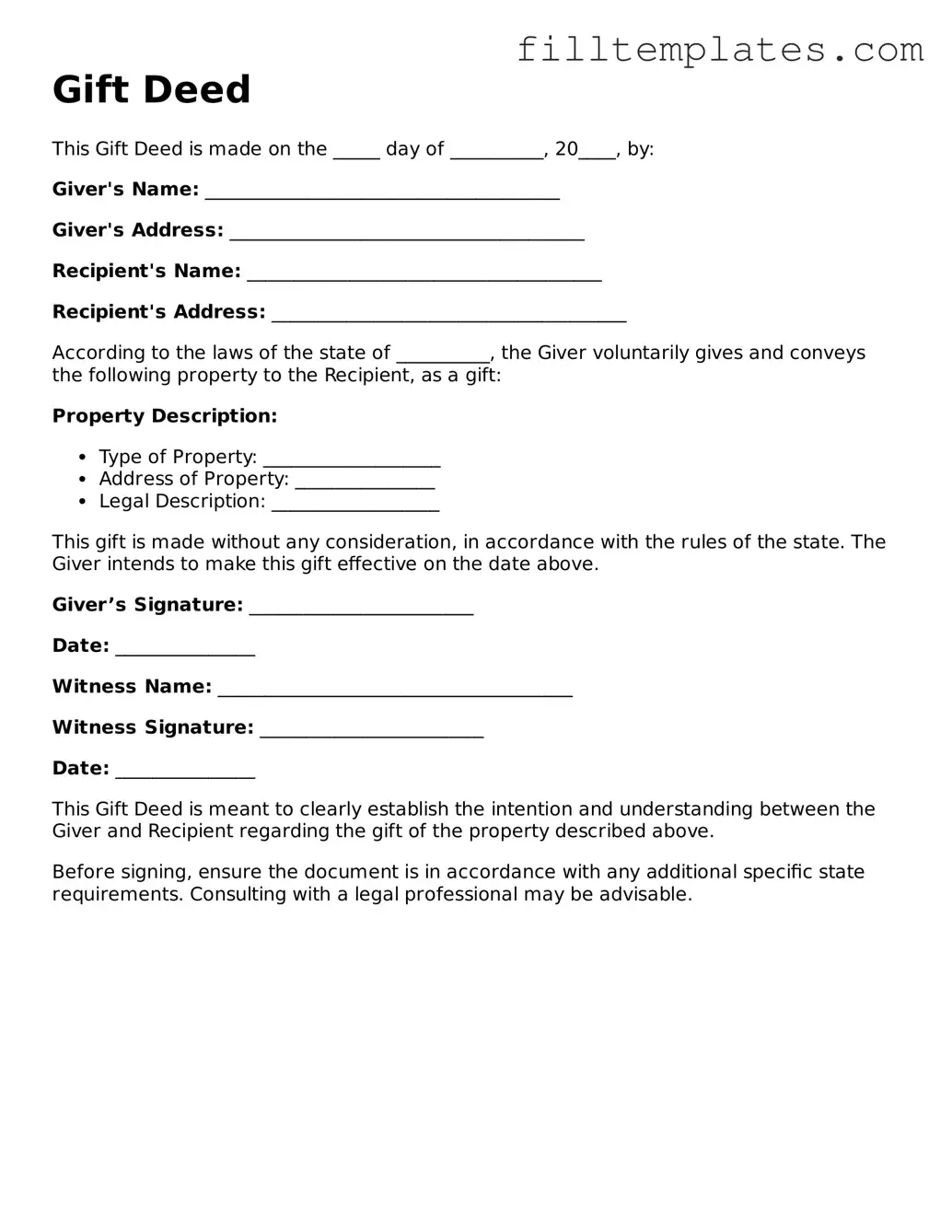Gift Deed
This Gift Deed is made on the _____ day of __________, 20____, by:
Giver's Name: ______________________________________
Giver's Address: ______________________________________
Recipient's Name: ______________________________________
Recipient's Address: ______________________________________
According to the laws of the state of __________, the Giver voluntarily gives and conveys the following property to the Recipient, as a gift:
Property Description:
- Type of Property: ___________________
- Address of Property: _______________
- Legal Description: __________________
This gift is made without any consideration, in accordance with the rules of the state. The Giver intends to make this gift effective on the date above.
Giver’s Signature: ________________________
Date: _______________
Witness Name: ______________________________________
Witness Signature: ________________________
Date: _______________
This Gift Deed is meant to clearly establish the intention and understanding between the Giver and Recipient regarding the gift of the property described above.
Before signing, ensure the document is in accordance with any additional specific state requirements. Consulting with a legal professional may be advisable.
